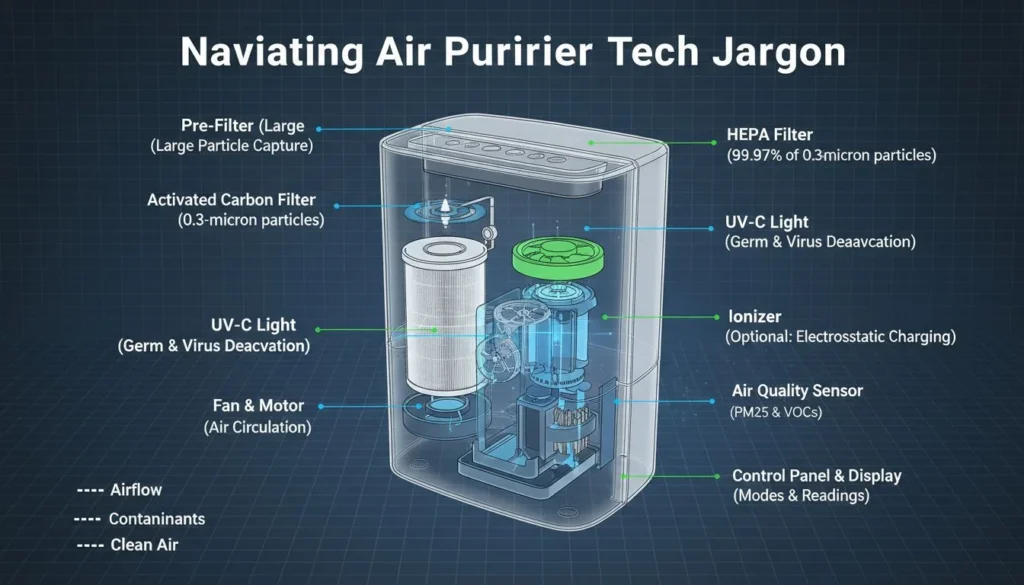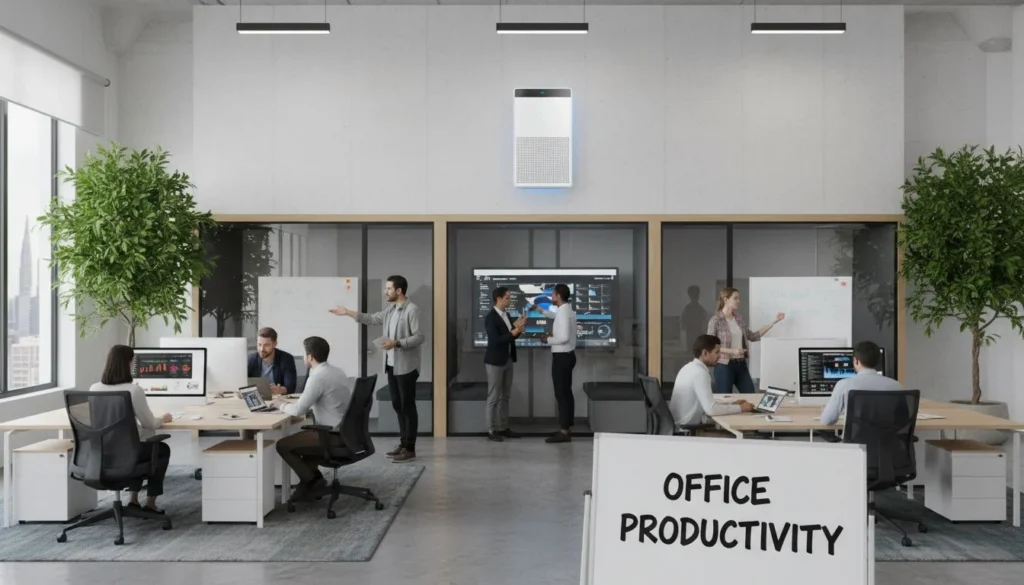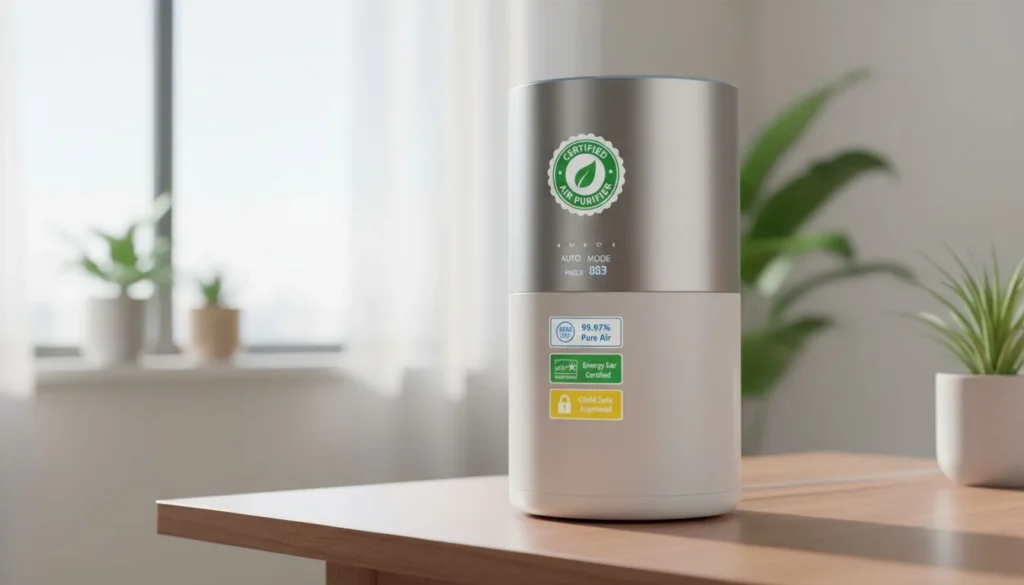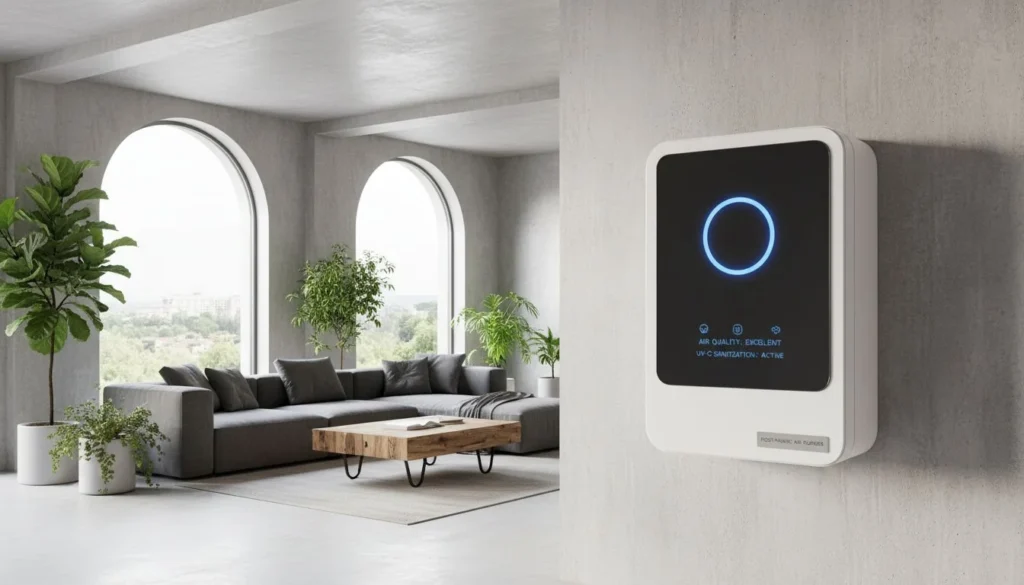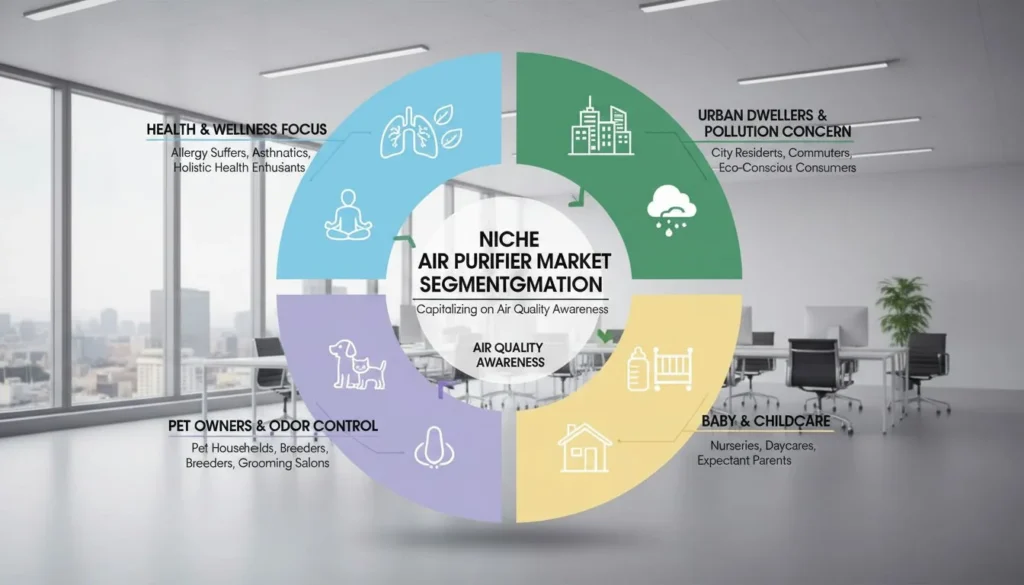Have you ever wondered what might be lurking inside your humidifier when you haven't cleaned it for weeks? While humidifiers offer numerous benefits for respiratory health, skin hydration, and overall comfort, they can quickly transform from wellness allies to health hazards without proper maintenance. This comprehensive guide explores the often-overlooked aspects of humidifier care that are essential for protecting your health and maximizing device performance.
As indoor air quality becomes increasingly important for overall wellbeing, humidifiers have become staple appliances in many homes and offices. However, the moist environment they create—while beneficial for our respiratory systems—can also become an ideal breeding ground for bacteria, mold, and other microorganisms when not properly maintained. Understanding the specific maintenance requirements for different humidifier types and implementing a consistent cleaning routine is crucial for ensuring these devices enhance rather than compromise your health.
At HisoAir, we've spent years researching and developing humidification solutions that balance performance with user-friendly maintenance. This guide shares our expertise and insights from leading health authorities to help you maintain your humidifier effectively, regardless of brand or model.
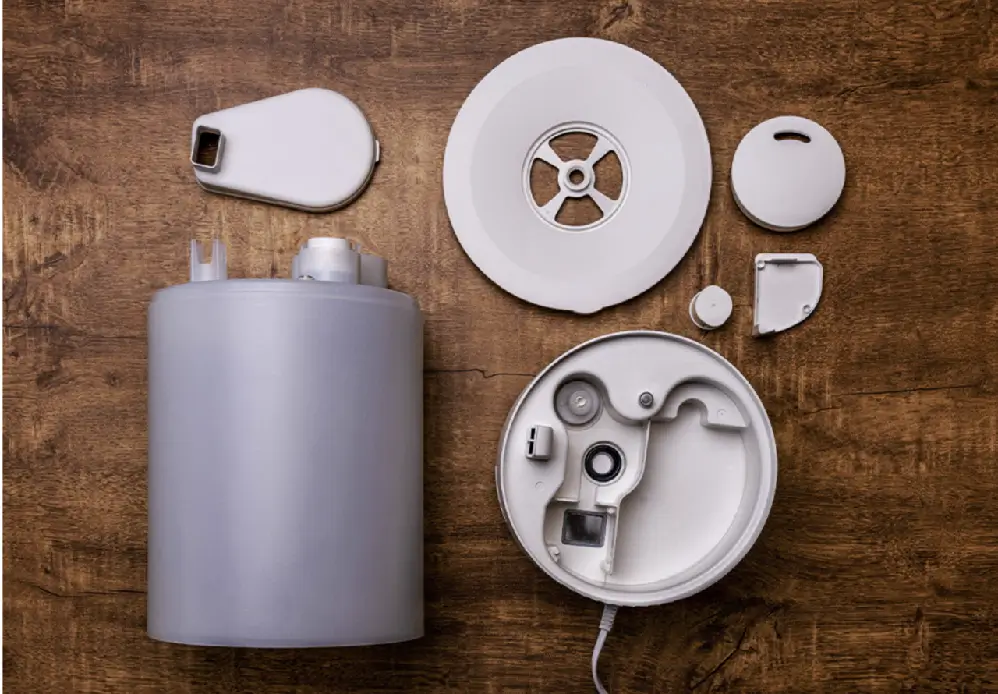
Different Humidifier Types and Their Unique Maintenance Challenges
Not all humidifiers are created equal when it comes to maintenance requirements. Understanding the specific needs of your device type is the first step toward effective care and optimal performance.
Ultrasonic Humidifiers: Precision Technology Requiring Precise Care
Ultrasonic humidifiers1 use high-frequency vibrations to create a fine mist, offering quiet operation and efficient humidification. However, this technology presents unique maintenance challenges. The vibrating plates and water tanks in ultrasonic units can quickly accumulate mineral deposits from tap water, creating a white dust that disperses into your air. This not only affects air quality but can also damage the ceramic plates over time.
Maintenance challenges specific to ultrasonic humidifiers include:
- Mineral buildup on vibrating plates that reduces efficiency and mist output
- Water tanks with narrow openings that make thorough cleaning difficult
- Potential for biofilm development in water reservoirs and misting chambers
- Need for more frequent cleaning due to mineral deposit formation
For ultrasonic humidifier owners, daily emptying and refilling with fresh water is essential, along with twice-weekly deep cleaning of all components that contact water. Using distilled water can significantly reduce mineral buildup and extend the time between deep cleanings, though it doesn't eliminate the need for regular maintenance.
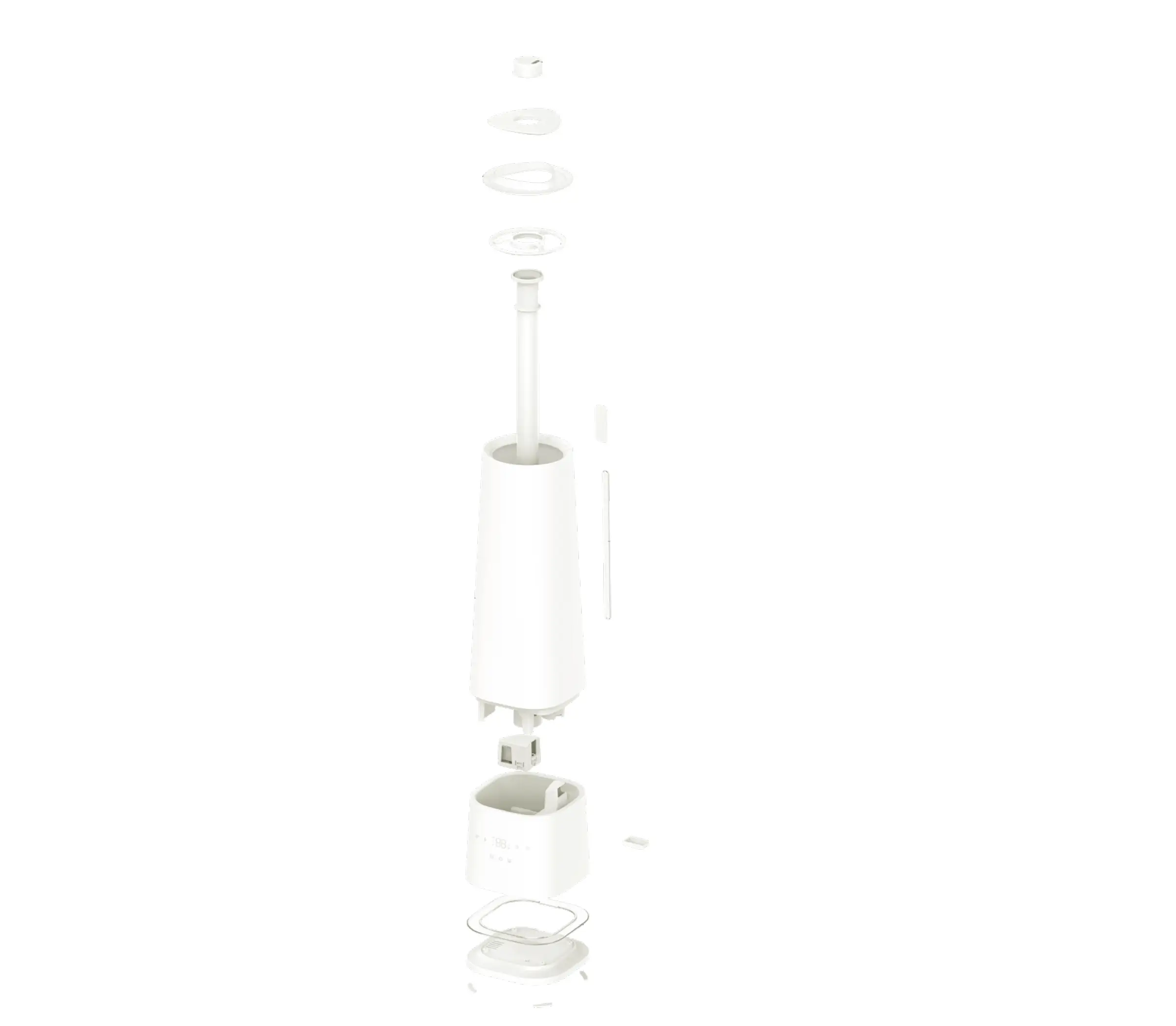
Evaporative Humidifiers: Filter-Focused Maintenance
Evaporative humidifiers work by passing air through a moistened wick or filter, naturally adding humidity to your environment. While generally requiring less frequent cleaning than ultrasonic models, they present their own maintenance considerations.
The primary maintenance focus for evaporative humidifiers is the wick filter, which can become a breeding ground for microorganisms if not properly maintained. These filters naturally trap minerals from water, preventing them from becoming airborne, but this also means they require regular replacement or cleaning to prevent microbial growth.
Key maintenance requirements include:
- Regular inspection and cleaning of the wick filter (typically every 1-2 weeks)
- Complete replacement of filters according to manufacturer guidelines (usually every 1-3 months)
- Cleaning of the water tank and base to prevent biofilm formation
- Ensuring proper drying of components between uses
The advantage of evaporative humidifiers is their self-regulating nature—they cannot over-humidify a space and typically produce fewer airborne particles when properly maintained. However, neglected filters can significantly reduce efficiency and potentially introduce contaminants into your air.
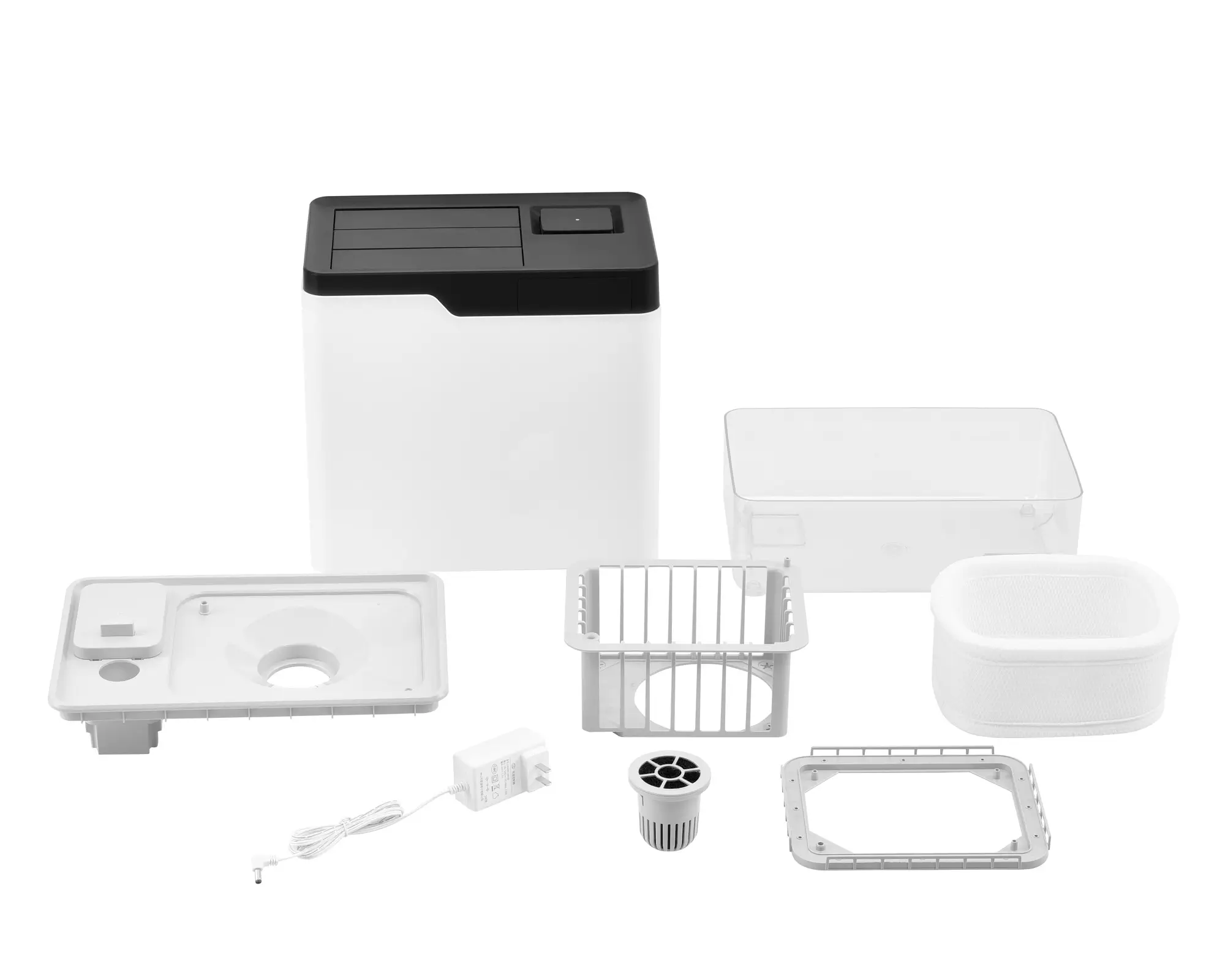
Steam Vaporizers: Heat-Based Simplicity with Specific Needs
Steam vaporizers heat water until it becomes steam, killing most bacteria and microorganisms in the process. While this provides some inherent protection against microbial contamination, these units still require regular maintenance.
The heating element in steam vaporizers is particularly prone to mineral buildup, which can affect performance and eventually damage the unit. Additionally, the high temperatures create an environment where any surviving microorganisms can multiply rapidly when the unit cools down.
Maintenance priorities for steam vaporizers include:
- Regular descaling of the heating element to remove mineral deposits
- Thorough cleaning of the water container after each use
- Careful attention to electrical components during cleaning
- Complete drying before storage to prevent mold growth
While steam vaporizers may require less frequent deep cleaning than other types, their maintenance cannot be neglected, particularly in areas with hard water where mineral buildup occurs more rapidly.
Humidifier Water Choice: The Foundation of Healthy Operation
The type of water you use in your humidifier significantly impacts both its performance and the potential health implications of its operation. Making informed choices about water can reduce maintenance frequency and minimize health risks.
The Hidden Risks of Tap Water in Humidifiers
Most humidifier users naturally reach for tap water when filling their devices. However, tap water contains minerals and sometimes microorganisms that can create problems in humidifier systems. When used in ultrasonic humidifiers, these minerals become aerosolized and released into the air as "white dust," which can irritate respiratory systems and exacerbate conditions like asthma.
Research from the University of Alberta found that operating an ultrasonic humidifier with tap water2 resulted in particulate matter concentrations equivalent to those in a polluted city, significantly impacting indoor air quality. These particles can be inhaled deep into the lungs, potentially causing respiratory irritation or exacerbating existing conditions.
Beyond air quality concerns, minerals in tap water create scale buildup on humidifier components, reducing efficiency and providing surfaces where bacteria can adhere and multiply. This buildup is particularly problematic for heating elements in steam vaporizers and vibrating plates in ultrasonic models.
Distilled Water: The Gold Standard for Humidifier Operation
Distilled water3 represents the optimal choice for most humidifier types, particularly ultrasonic models. The distillation process removes minerals, microorganisms, and other contaminants, providing several benefits:
- Elimination of white dust emission in ultrasonic humidifiers
- Reduced mineral buildup on components, extending device lifespan
- Decreased frequency of deep cleaning requirements
- Lower risk of microorganism growth in the water reservoir
While distilled water is the ideal choice, it does represent an ongoing cost and environmental consideration due to plastic bottle usage. For those concerned about these factors, alternatives exist that can still improve upon standard tap water.
Filtered and Demineralized Water Options
Several middle-ground options exist between tap water and distilled water:
-
Filtered water from pitcher filters or refrigerator systems can remove some contaminants but typically doesn't eliminate all minerals.
-
Reverse osmosis water provides near-distilled quality and is an excellent option if you have a home system installed.
-
Demineralized water specifically designed for humidifiers offers a convenient alternative to distilled water with similar benefits.
-
Bottled spring water is not recommended as it often contains high mineral content similar to or exceeding tap water.
For evaporative humidifiers, the water choice is less critical since the wick filter naturally prevents minerals from becoming airborne. However, using lower-mineral content water will extend filter life and reduce maintenance frequency.
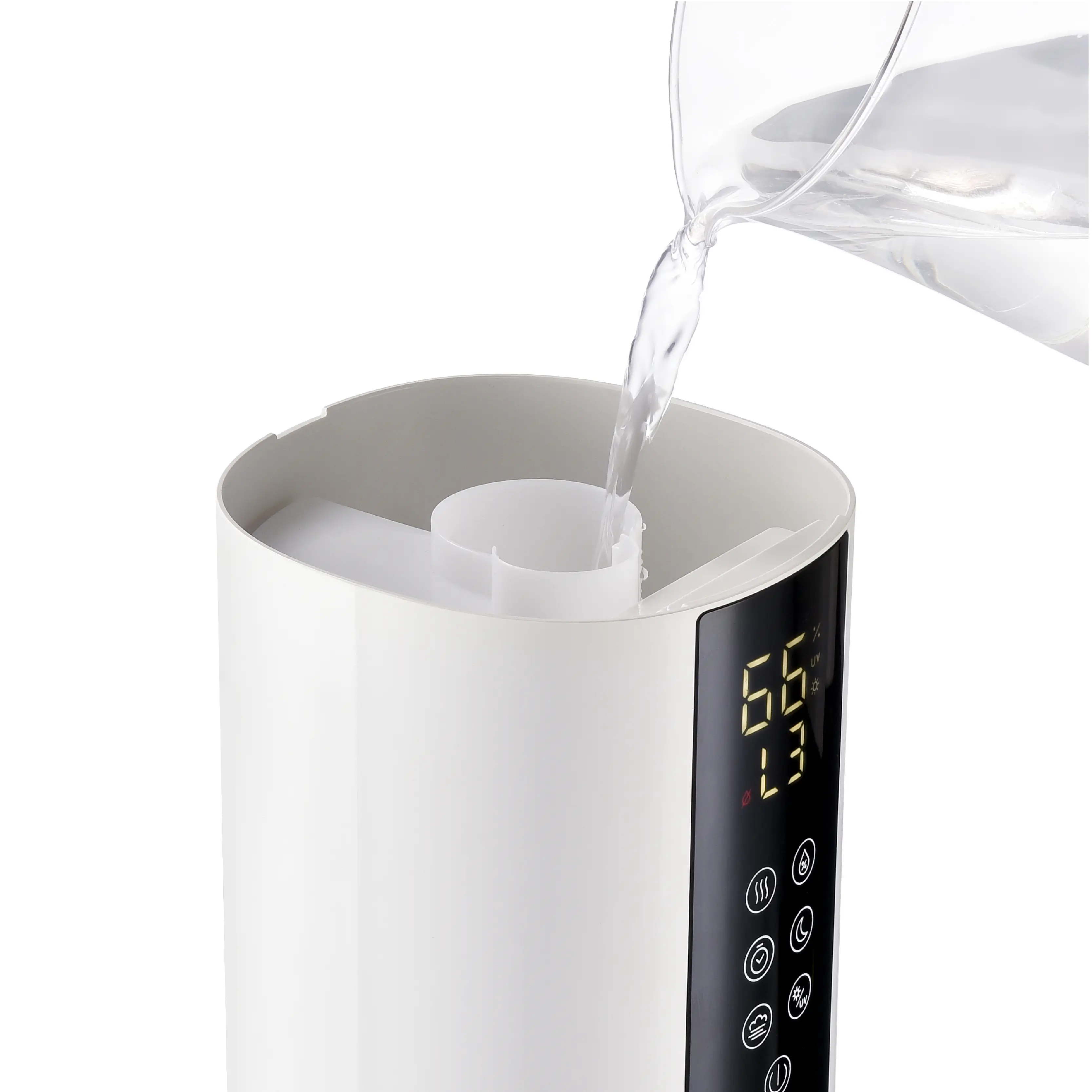
Bacteria and Mold: Identification, Prevention, and Treatment
Perhaps the most significant health concern associated with humidifier use is the potential for microbial growth. Understanding how to identify, prevent, and address contamination is essential for safe operation.
Recognizing Signs of Microbial Contamination
Several indicators suggest your humidifier may be harboring harmful microorganisms:
- Visible slime or film on any water-contacting surfaces
- Musty, sweet, or unpleasant odors when the unit operates
- Discoloration in the water tank or base (pink, orange, green, or black)
- Respiratory symptoms that worsen when the humidifier is running
- Increased allergy symptoms or asthma flare-ups coinciding with humidifier use
According to the Mayo Clinic, dirty humidifiers can particularly affect people with asthma and allergies, but even healthy individuals may develop symptoms like fever, cough, lung inflammation, and shortness of breath—sometimes called "humidifier fever4"—when exposed to contaminated mist.
The Science of Microbial Growth in Humidifiers
Bacteria and mold5 thrive in the moist environment of humidifiers, with several factors influencing their growth rate:
- Standing water provides an ideal medium for microorganism reproduction
- Room temperature water creates perfect conditions for certain pathogens
- Mineral deposits provide surfaces for biofilm formation
- Dark, enclosed spaces in humidifier components limit UV exposure that might naturally kill some microorganisms
- Inconsistent use patterns (turning the unit on and off) can accelerate growth during dormant periods
Research from the Environmental Protection Agency (EPA) indicates that bacteria can multiply to significant levels in humidifier water within just 48 hours, highlighting the importance of daily water changes and regular cleaning.
Effective Prevention Strategies
Preventing microbial growth is far easier than addressing an established contamination problem. Implement these practices to maintain a healthy humidifier:
- Empty the water tank daily and refill with fresh water before each use
- Clean all water-contacting parts twice weekly using appropriate methods for your humidifier type
- Ensure complete drying of all components when not in use
- Replace filters and wicks according to manufacturer recommendations
- Use distilled or appropriately treated water to reduce mineral buildup that harbors bacteria
- Consider antimicrobial treatments specifically designed for humidifiers (following manufacturer guidelines)
- Monitor humidity levels to prevent excessive moisture that promotes mold growth in the surrounding environment
For commercial environments or healthcare settings, additional precautions may be necessary, including more frequent maintenance and potentially the use of antimicrobial additives approved for such applications.
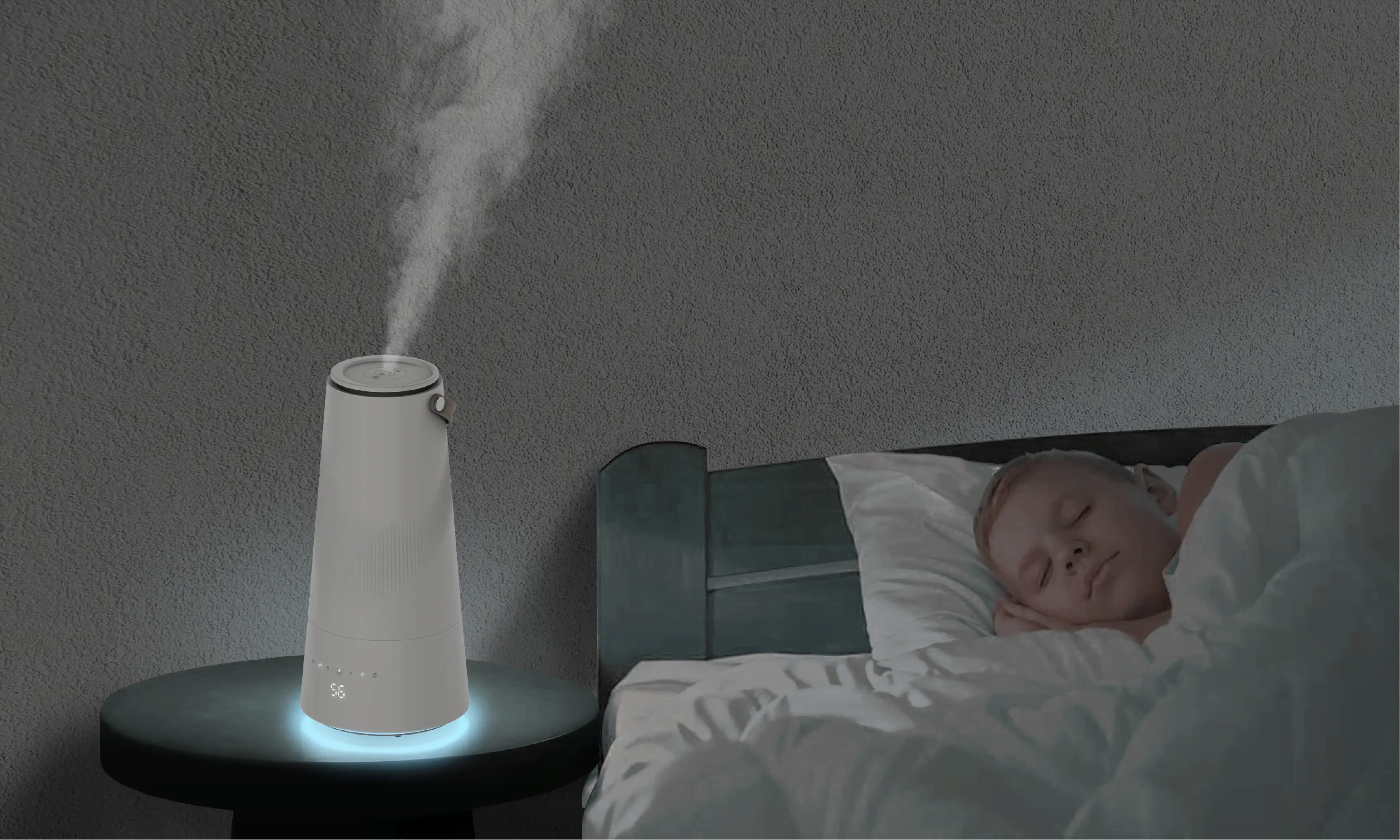
Establishing a consistent maintenance routine is the cornerstone of safe humidifier operation. This section provides a comprehensive schedule based on recommendations from health authorities and manufacturer best practices.
Daily Maintenance: The Three-Minute Protocol
Investing just three minutes daily can significantly reduce health risks and extend your humidifier's lifespan:
- Unplug the unit for safety
- Empty all standing water from the tank and base
- Rinse thoroughly with fresh water to remove any loose deposits
- Wipe accessible surfaces with a clean, dry cloth
- Refill with fresh water (preferably distilled) just before next use
This simple daily routine disrupts the microbial growth cycle and prevents the accumulation of biofilm that can be difficult to remove once established.
Weekly Deep Cleaning: Step-by-Step Process
Once weekly, perform a more thorough cleaning following these steps:
- Disassemble all removable parts according to manufacturer instructions
- Discard any used filters that are due for replacement
- Clean non-electrical components using one of these methods:
- White vinegar solution: Mix 1 cup of white vinegar with 1 gallon of water, soak components for 20-30 minutes{.external-link}6
- Hydrogen peroxide solution: Use a 3% solution for soaking (not suitable for all materials—check manufacturer guidelines)
- Commercial humidifier cleaners: Follow product instructions precisely
- Scrub surfaces gently with a soft brush to remove any residue
- Rinse thoroughly with clean water multiple times
- Disinfect using a solution of 1 teaspoon bleach per gallon of water (if manufacturer-approved)
- Rinse again thoroughly to remove any cleaning agent residue
- Air dry completely before reassembling
For ultrasonic humidifiers, pay special attention to the vibrating plates, using cotton swabs dipped in white vinegar to gently clean these sensitive components.
Monthly and Seasonal Maintenance
Beyond weekly cleaning, additional maintenance tasks should be performed monthly or seasonally:
Monthly tasks:
- Descale heating elements or ultrasonic plates with undiluted white vinegar (followed by thorough rinsing)
- Inspect for damage or wear on gaskets, seals, and electrical components
- Check and clean external vents and air intakes
- Verify humidity output is meeting expectations
End-of-season tasks:
- Perform a final deep cleaning using the weekly protocol
- Discard used filters rather than storing them
- Ensure complete drying of all components
- Store disassembled in a clean, dry place
- Cover to prevent dust accumulation during storage
Beginning-of-season tasks:
- Inspect all components for damage or wear
- Install new filters as needed
- Conduct a "test run" with fresh water
- Clean again before regular use if the unit has been stored for an extended period
Professional Cleaning Products vs. Natural Alternatives
The market offers numerous cleaning products specifically designed for humidifiers, but many natural alternatives can be equally effective while potentially reducing chemical exposure and environmental impact.
Evaluating Commercial Humidifier Cleaners
Commercial cleaners offer convenience and are formulated to address specific humidifier maintenance challenges:
Advantages:
- Targeted formulations for mineral deposit removal
- Often include antimicrobial agents
- Convenient pre-measured concentrations
- May include corrosion inhibitors to protect components
Considerations:
- Chemical residues may be aerosolized if not thoroughly rinsed
- Higher cost compared to natural alternatives
- Environmental impact of packaging and chemical production
- Some contain harsh chemicals requiring careful handling
When selecting commercial cleaners, look for products specifically designed for humidifiers rather than general descaling agents, and always verify compatibility with your specific humidifier type.
Effective Natural Cleaning Alternatives
Several natural substances can effectively clean and maintain humidifiers:
-
White vinegar: The acidity effectively dissolves mineral deposits and kills many bacteria and mold species. Use in a 1:1 solution with water for regular cleaning or undiluted for stubborn deposits.
-
Citric acid: A natural descaling agent that works similarly to vinegar but without the strong odor. Use 1-2 tablespoons dissolved in a quart of warm water.
-
Hydrogen peroxide (3%): Effective for disinfection after cleaning with vinegar or citric acid. Not recommended for initial cleaning as it doesn't remove mineral deposits effectively.
-
Baking soda: Useful for scrubbing accessible parts, but not effective for soaking or descaling.
For most home humidifiers, white vinegar6 represents the most cost-effective and environmentally friendly cleaning option, with research confirming its efficacy against many common microorganisms found in humidifiers.
Products and Practices to Avoid
Certain cleaning approaches can damage humidifiers or create health hazards:
- Bleach without thorough rinsing (can be aerosolized and irritate lungs)
- Abrasive cleaners that can damage plastic components
- Essential oils added directly to humidifier water (can damage plastic and create respiratory irritants)
- Mixing cleaning agents (particularly vinegar and bleach, which creates toxic chlorine gas)
- Dishwasher cleaning unless specifically approved by the manufacturer
- Antibacterial soaps that can leave residues
Always consult your humidifier's manual for specific cleaning recommendations and prohibited substances.
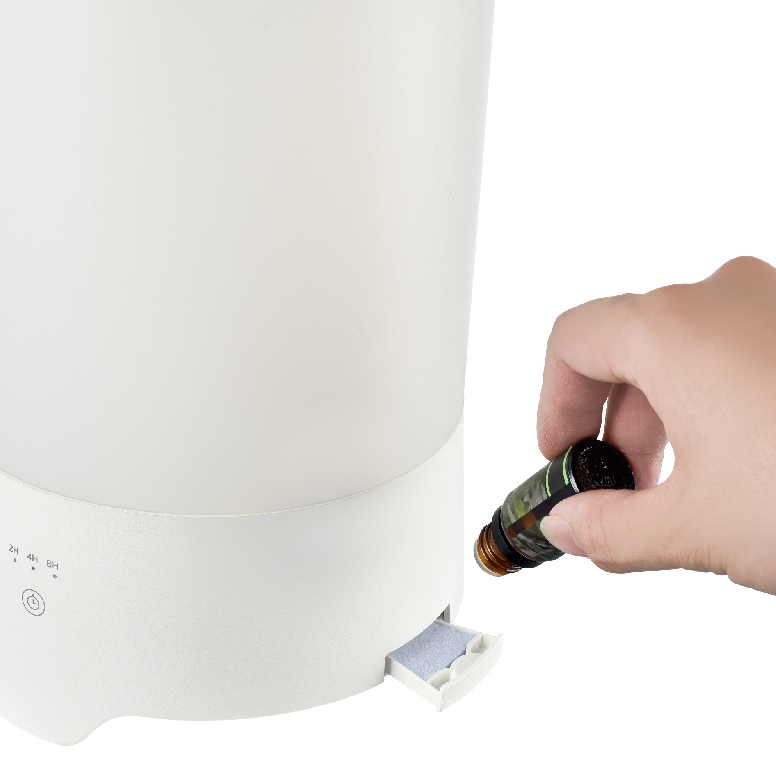
Common Maintenance Issues and Solutions
Even with regular maintenance, humidifier users often encounter specific problems that require targeted solutions. Addressing these issues promptly can prevent more serious complications and extend device lifespan.
Addressing Mineral Scale Buildup
Scale removal7 is one of the most common maintenance challenges, particularly in areas with hard water. Signs of problematic scale buildup include:
- Reduced mist output
- Increased operating noise
- Visible white or yellow deposits on components
- Error messages on digital models
For severe scale buildup that doesn't respond to regular cleaning methods:
- Create a stronger descaling solution using equal parts white vinegar and water
- Soak affected components for 30-60 minutes (longer for severe buildup)
- Use a soft brush to gently scrub remaining deposits
- For ultrasonic plates or heating elements, use cotton swabs dipped in undiluted vinegar
- Rinse thoroughly multiple times to remove all vinegar residue
For persistent scale problems, consider using distilled water exclusively or installing a water softening system if multiple household appliances are affected.
Eliminating Persistent Odors
Unpleasant odors typically indicate bacterial or mold growth that regular cleaning hasn't fully addressed. To eliminate persistent odors:
- Disassemble the unit completely, including any parts not normally removed
- Inspect for hidden mold or slime in crevices and seams
- Soak all washable components in a solution of equal parts white vinegar and water for 1 hour
- For plastic components with absorbed odors, add 1/2 cup baking soda to a gallon of water and soak after the vinegar treatment
- Use cotton swabs to clean small openings and connections
- Allow all components to air dry completely in sunlight if possible
- Replace any components that retain odors despite cleaning
If odors persist after thorough cleaning, replacement of certain components or the entire unit may be necessary, as some materials can permanently absorb odors and contaminants.
Restoring Diminished Mist Output
Reduced humidification performance often indicates maintenance issues that can be resolved through targeted cleaning:
For ultrasonic humidifiers:
- Clean the vibrating plates with undiluted white vinegar and a cotton swab
- Check for and clear any blockages in the mist outlet
- Ensure the unit is on a level surface
- Verify water level is within recommended range
For evaporative humidifiers:
- Replace clogged or mineralized wicks/filters
- Clean any dust or debris from the fan and air intake
- Check for proper fan operation
- Ensure adequate airflow around the unit
For steam vaporizers:
- Descale the heating element thoroughly
- Check for and clear any blockages in steam vents
- Verify electrical connections are clean and secure
Addressing Increased Noise Levels
Humidifiers typically operate quietly, so increased noise often indicates maintenance issues:
- Grinding or scraping sounds may indicate mineral deposits on moving parts or fans
- Gurgling or bubbling often results from water flow obstructions
- Clicking or popping in ultrasonic models typically indicates scale on vibrating plates
- Increased fan noise may result from dust accumulation or component wear
Regular maintenance prevents most noise issues, but for existing problems:
- Identify the specific component generating noise
- Clean thoroughly with appropriate methods for that component
- Check for loose parts or connections
- Ensure the unit is on a stable, level surface
- Verify water levels are within recommended ranges
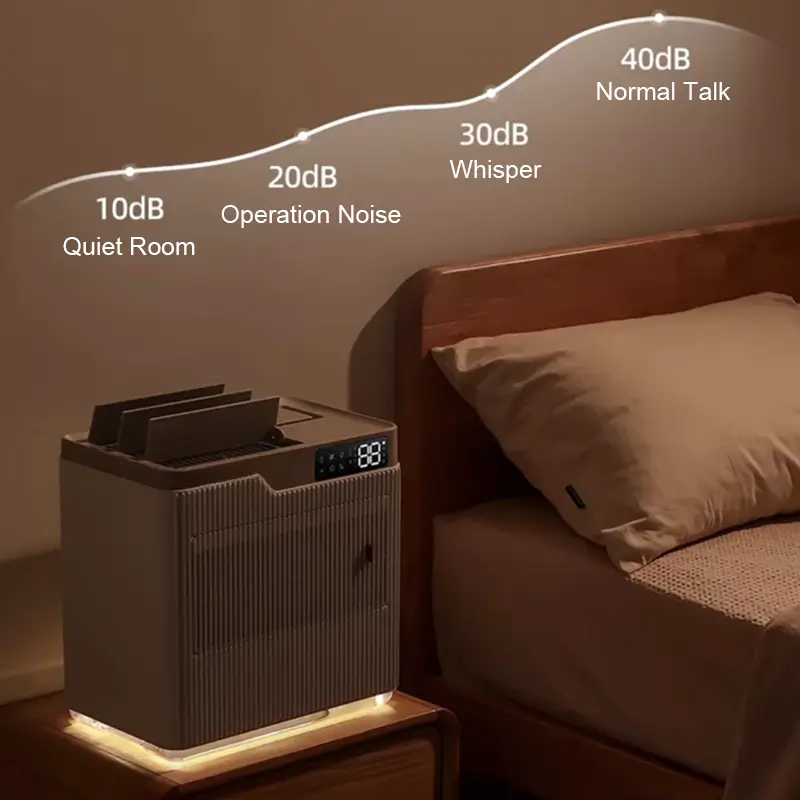
Conclusion: The Long-Term Benefits of Diligent Humidifier Maintenance
Establishing and following a consistent maintenance routine for your humidifier delivers significant benefits beyond basic functionality. The investment in regular cleaning and proper water choice pays dividends in multiple ways:
Health benefits:
- Reduced risk of respiratory infections and "humidifier fever"
- Decreased exposure to airborne irritants and allergens
- Lower likelihood of triggering asthma or allergy symptoms
- Consistent delivery of the therapeutic humidity levels that benefit respiratory health
Economic advantages:
- Extended device lifespan, delaying replacement costs
- Improved energy efficiency and performance
- Reduced need for component replacement
- Lower likelihood of water damage from malfunctioning units
Environmental considerations:
- Decreased electronic waste through longer device lifespans
- Reduced energy consumption from efficiently operating units
- Lower environmental impact when using natural cleaning methods
When selecting a new humidifier, consider maintenance requirements as a primary factor in your decision. Features that facilitate easy cleaning—such as wide tank openings, dishwasher-safe components, and accessible design—can significantly reduce the time and effort required for proper maintenance.
HisoAir's commitment to user-friendly maintenance is reflected in our product designs, which prioritize easy-to-clean tanks, accessible components, and clear maintenance guidelines. We believe that the best humidifier is one that not only performs effectively but also encourages consistent maintenance through thoughtful design.
By implementing the maintenance practices outlined in this guide, you can transform your humidifier from a potential health hazard into a reliable wellness tool that enhances your indoor environment safely and effectively. Remember that consistency is key—even the best maintenance protocol is only effective when regularly implemented.
-
Effect of aerosol particles generated by ultrasonic humidifiers on the lung tissue of mice. Research shows ultrasonic humidifiers can generate aerosol particles that may affect air quality and potentially impact respiratory health when minerals and impurities are present in water. ↩
-
Using tap water in an ultrasonic humidifier may be polluting your air. University of Alberta research found that operating ultrasonic humidifiers with tap water resulted in particulate matter concentrations equivalent to those in polluted cities, significantly impacting indoor air quality. ↩
-
What Water Should You Use for Your Humidifier? Distilled water is free from minerals and contaminants that can cause buildup in humidifiers, making it the optimal choice for most humidifier types, particularly ultrasonic models. ↩
-
Humidifiers: Ease skin, breathing symptoms. Mayo Clinic warns that dirty humidifiers can particularly affect people with asthma and allergies, but even healthy individuals may develop symptoms like fever, cough, and shortness of breath when exposed to contaminated mist. ↩
-
Indoor Air Facts No. 8 Use and Care of Home Humidifiers. EPA research indicates that bacteria can multiply to significant levels in humidifier water within just 48 hours, highlighting the importance of daily water changes and regular cleaning. ↩
-
How to Clean a Humidifier, Plus Tips for Maintaining and Replacing. White vinegar is confirmed as an effective cleaning agent for humidifiers, with research showing its efficacy against many common microorganisms found in these devices. ↩ ↩
-
How To Clean A Humidifier: A Maintenance Guide. Scale removal is one of the most common maintenance challenges, particularly in areas with hard water, requiring specific cleaning approaches to prevent performance issues. ↩


